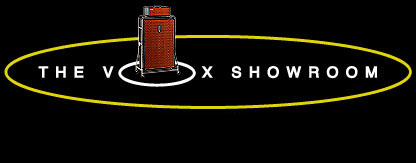| Expanding on the success of the V301J single manual Continental Organ, JMI started the development of a dual manual Continental Organ in 1964. This new organ would include features that made it even more "Hammond" like than the single keyboard V301J Continental. More about that later.
Like the single manual V301J Continental Organ, the UK Vox V303J "Continental II" (known as the Super Continental in the U.S.) had twelve small, solid state tone generator printed circuit cards, one for each note of the musical scale. Each of these twelve cards was fitted with ten electrical contact pins that mated to a ten connector socket in the organ chassis and held in place by one screw.
Each of these twelve tone generator cards had a "master oscillator" and a six stage frequency "divider" circuit.
The master oscillator circuit used a pair of germanium transistors, several capacitors and a tuning coil. The master oscillator was the frequency tunable part of the circuit. The master oscillator also produces the organ's highest pitched tones. The pitch or frequency of the master oscillator is tunable by adjusting the tuning coil.
The output from the master oscillator is fed serially through six slave divider circuits. Each divider drops the input frequency in half or by one octave. Each of these six divider circuits had a pair of germanium transistors and a network of resistors and capacitors to accomplish this task. The output from the master oscillator and six serial dividers provided seven individual and discrete octaves of tones that would be combined and adjusted by the drawbar circuit of the organ, as done by Hammond.
When JMI first introduced the Continental Organ in 1962, germanium based transistors were the norm. Germanium transistors were not very dependable, as evidenced by anyone in the early 1960s that had a small transistor radio that failed. The germanium transistors were also prone to drift, causing both tuning and slave divider instability. For these reasons, Vox organs manufactured between 1962 and 1970 with germanium transistor based tone generator cards tended to visit the repair shop often.
By 1967, Joe Benaron, the president of the Thomas Organ company and US distributor of Vox, felt that the cost of US labor was holding down the profits of Vox. He wished to establish a large manufacturing plant in Italy to manufacture many, if not all of the produts sold by Vox throughout the world. Benaron hoped that JMI, the British division of Vox, would join him in this enterprise in Italy. First on the list of Vox products to be manufactured in Italy were the Vox organs.
Upon hearing this development, JMI was not very pleased. JMI had its own manufacturing facilities and labor force, and wished to keep it that way. However, the JMI Vox facility in Erith, Kent, UK that manufactured all the British Vox organs burned to the ground in 1967. This fire caused the Italian made V303E Super Continental to have no competition from Vox in the UK for almost two years.
In web pages to follow, I will explain the basics of V303E Super Continental Organ repair and adjustment so you can handle some of this maintainence yourself.
|



